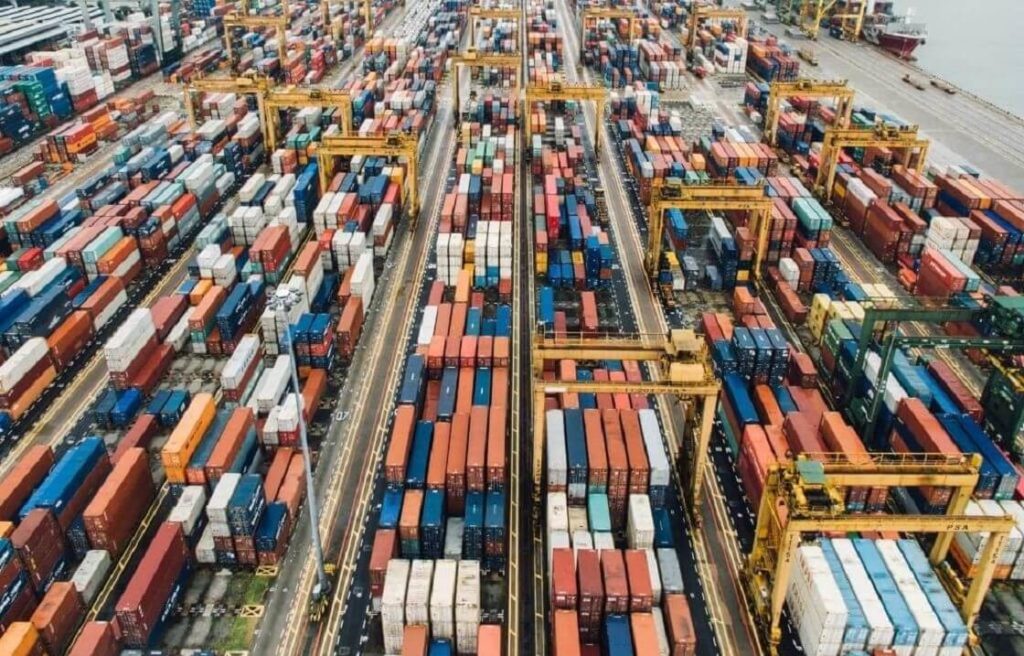Manufacturers wondering when knots in the supply chain come loose will have to wait a while longer. A heated debate on the ongoing bottlenecks at American ports had members of the House Committee on Transportation and Infrastructure blaming everything from the labor shortage, stimulus checks, and greedy ocean shippers like Hapag Lloyd. But everyone agreed that the problem is multi-faceted, and won’t be fixed soon despite the passing of the Infrastructure and Jobs Investment Act this week.
Perhaps the biggest takeaway of interest to CPA members was the massive amounts of goods being imported from Asia.
“The root cause of our supply chain bottlenecks is multivariate,” said Greg Regan, president of the Transport Trades Department at the AFL-CIO at Wednesday’s hearing titled “Industry and Labor Perspectives: A Further Look at North American Supply Chain Challenges.”
“Year to date, overall cargo volume through the Port of Los Angeles/Long Beach has increased by a massive 26% compared to 2020, driven in part by a sharp uptick in consumer demand for durable goods,” he said in his testimony to to the Committee. All of it is coming from Asia he noted.
Chairman John Garamendi (D-CA-3) talked briefly about the “tremendous imbalance in trade” between the U.S. and Asia. at the end of the nearly five-hour hearing that he was not sure anyone has a solution.
He also reserved some of his scorn for a generally toothless Federal Maritime Commission that has not used its enforcement power to get the global shipping companies to carry California wine barrels or almonds to Asia instead of allowing the ships to hurry back to Asia to carry more imports to the U.S.
Most of the hearing was a lesson by the four witnesses in how containers get unloaded at a port and shipped from rail and truck across the country.
One witness, Chris Spear, CEO American Trucking Associations, said in his testimony that truckers couldn’t get chassis, the flat metal attachment to the bed of a truck that the containers get stacked on top of because most of them came from Asia. Why the U.S. isn’t making these at this time is another example of the country’s dependence on Asian manufacturing. It goes without saying that the region is America’s factory.
“We have limited chassis availability from global sources,” Spear said. ATA is concerned that the combination of tariffs and anti-dumping duties that have been imposed on those parts increased the cost of chassis while domestic production did not meet demand, he said. “Without increased chassis availability, motor carriers will continue to struggle to meet consumer demand in an efficient and timely manner.”
Spear’s comment should be a signal to the government that the transportation system itself is too dependent on Asian supplies like chassis. The shipping crisis should be viewed as an opportunity to rebuild production of goods in areas where there are shortages. Moreover, from an economic and national security perspective, these shortages are a dress rehearsal for what may happen if China ever unified with Taiwan and opted to nationalize its semiconductor foundries. The U.S. is almost fully reliant on Taiwanese foundries for chip-making.
However, if the U.S. economy resolves to just make everything abroad, then as actor Roy Scheider said in the 1975 movie Jaws: “You’re going to need a bigger boat.”
Barclays Capital economists said in a note to clients on Thursday that the drag on economic activity from supply bottlenecks is compounding, whether related to semiconductor shortages, intermediate goods, energy, shipping containers, or labor shortages. They said supply headwinds will continue to intensify into the first quarter of 2022, “if not longer”, according to cross-industry surveys and company filings.













